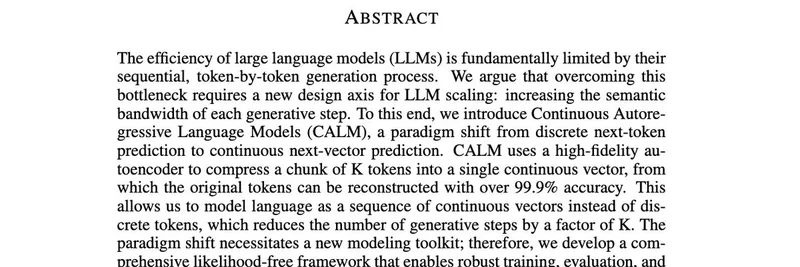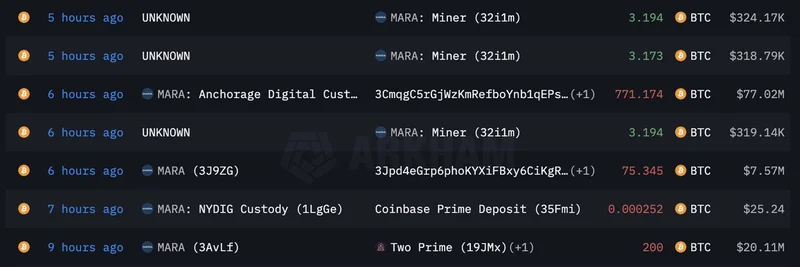The buzz on X (formerly Twitter) is real. A thread started by @rryssf_ and amplified by @Dr_Singularity has the AI community fired up about a potential paradigm shift in language models. Posted on November 4, 2025, the thread highlights a new paper from Tencent and Tsinghua University introducing Continuous Autoregressive Language Models, or CALM for short. This isn't just another incremental update—it's a rethink of how AI generates language, and it could have ripple effects in the world of meme tokens and blockchain.
What is CALM and Why the Hype?
Traditional large language models (LLMs), like the ones powering ChatGPT or Grok, work by predicting the next "token"—think of tokens as bite-sized pieces of text, such as words or parts of words—one at a time. It's like building a sentence brick by brick, which is efficient enough but hits a wall when scaling up because it requires a ton of computational steps.
CALM flips the script. Instead of discrete tokens, it predicts continuous vectors—mathematical representations that pack the meaning of multiple tokens into one go. Imagine going from speaking in Morse code to streaming full thoughts. According to the paper, this approach compresses chunks of tokens into a single vector with over 99.9% accuracy in reconstruction. The result? Fewer prediction steps (about 4x less), 44% reduced training compute, and no need for a fixed vocabulary.
The paper's abstract, shared in the thread, sums it up: CALM shifts from discrete next-token prediction to continuous next-vector prediction, enabling the model to handle language as a flow of ideas rather than isolated words. They even introduce a new metric called BrierLM to replace the old perplexity standard, and a likelihood-free framework for training and sampling without the usual softmax bottlenecks.
Breaking It Down: Key Advantages
Efficiency Boost: By reducing the number of generative steps, CALM makes AI models faster and cheaper to train and run. In experiments, it matched or beat strong discrete baselines while using significantly less compute.
Continuous Reasoning: No more rigid token limits. This allows for pure continuous reasoning, which could lead to more natural and creative outputs—perfect for applications needing quick, idea-level processing.
Scalability: The authors position this as a path to "ultra-efficient" language models, potentially making advanced AI accessible on smaller hardware.
As @rryssf_ put it in the original post: "It’s like going from speaking Morse code… to streaming full thoughts. If this scales, every LLM today is obsolete."
Implications for Meme Tokens and Blockchain
Now, you might be wondering: What does this have to do with meme tokens? At Meme Insider, we're all about connecting cutting-edge tech to the crypto space, and CALM fits right in. Meme tokens thrive on virality, community engagement, and rapid innovation—areas where AI is already making waves.
First off, AI-powered tools are huge in the meme coin ecosystem. Think trading bots, sentiment analyzers, or even AI-generated memes that fuel pumps. With CALM's efficiency gains, these tools could become smarter and more affordable. Imagine on-chain AI oracles that predict meme trends with less energy, integrated into decentralized apps (dApps) on networks like Solana or Ethereum.
AI-themed meme tokens could see a surge. We've got coins like $GROK or others riding the AI hype wave. A breakthrough like CALM from heavyweights like Tencent could spark new launches or pumps in existing ones, as traders bet on the intersection of AI and blockchain. Plus, lower compute costs mean more devs can experiment with AI in smart contracts, perhaps creating self-evolving meme token narratives or automated community management.
In the broader blockchain world, this could accelerate DeAI (Decentralized AI) projects. Efficient models like CALM make it feasible to run sophisticated AI on distributed networks, helping practitioners build more resilient, scalable systems. For meme token creators, it's a chance to leverage AI for better storytelling, faster content generation, and even predictive analytics on token performance.
Community Reactions and What's Next
The thread has garnered thousands of views, with reactions ranging from excitement to skepticism. @swordsmith points out it's part of a broader trend in latent reasoning models, while others like @thedouglas_d call it a leap toward true intelligence. Even replies questioning if it's "noise" until big players weigh in show the healthy debate in the space.
If you're a blockchain practitioner, keep an eye on this. The code is available on GitHub, and the project page offers more details. As AI and crypto continue to merge, innovations like CALM could be the spark for the next big meme token meta.
Stay tuned to Meme Insider for more on how tech like this shapes the meme economy. What do you think—will CALM change the game for AI in crypto? Drop your thoughts below!



